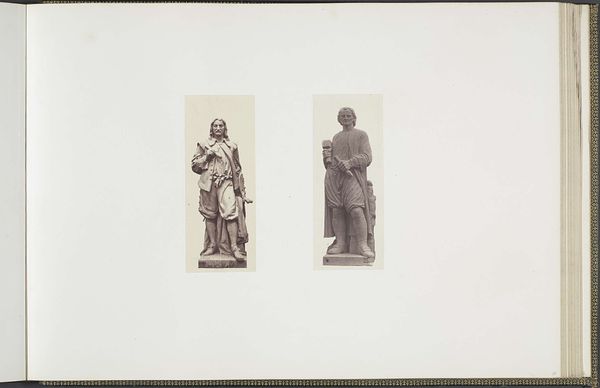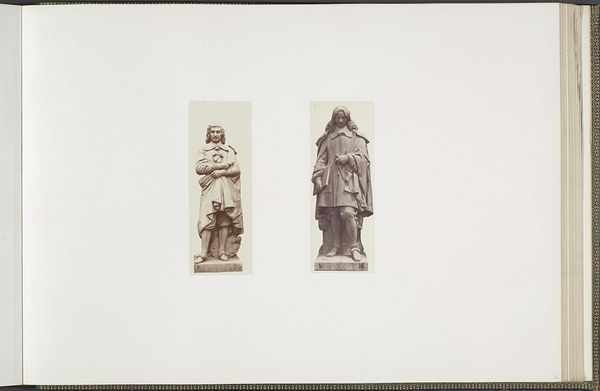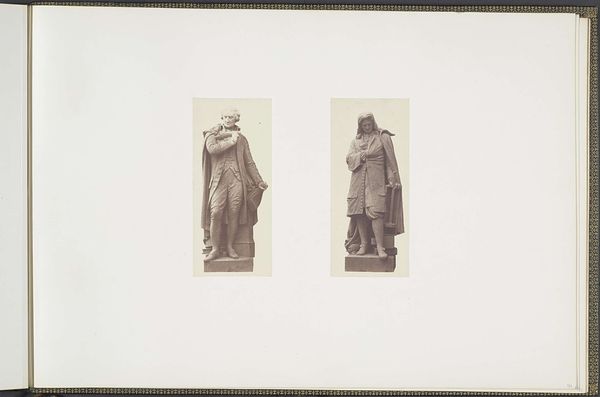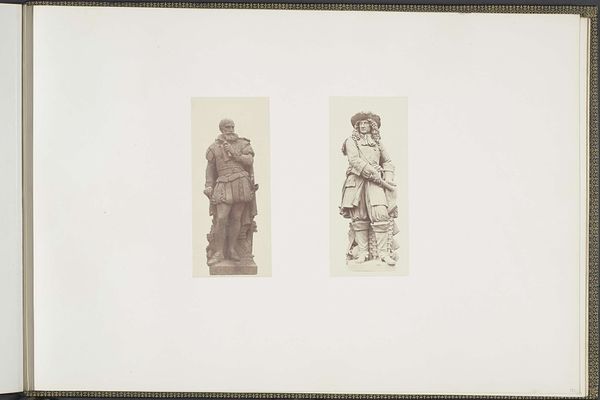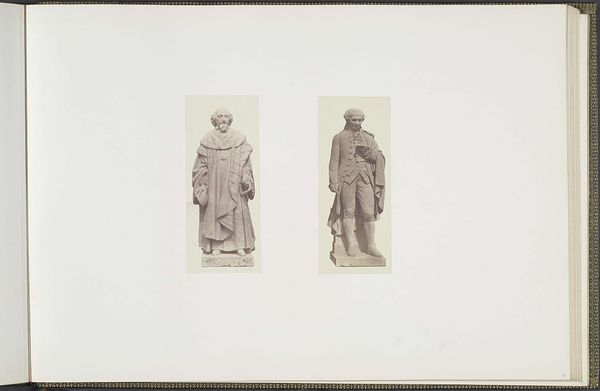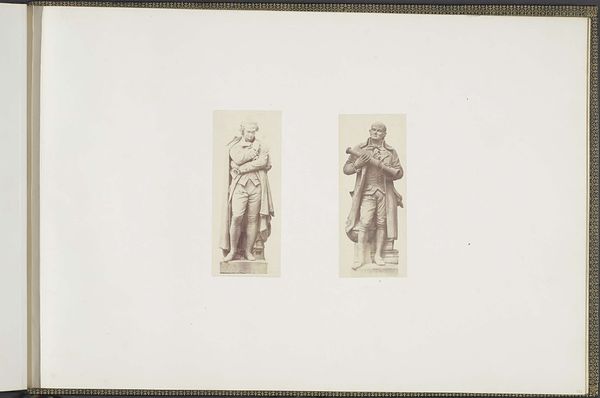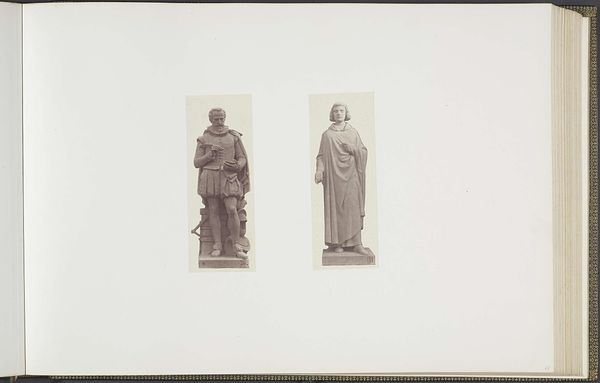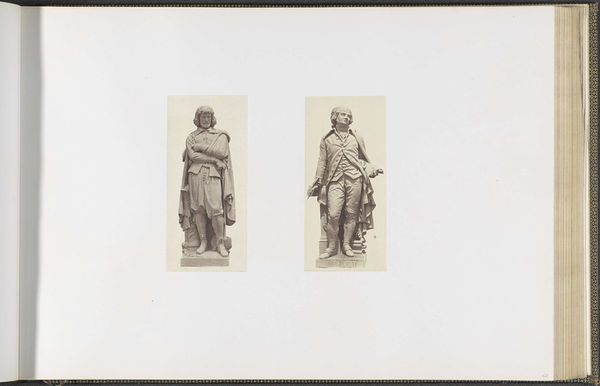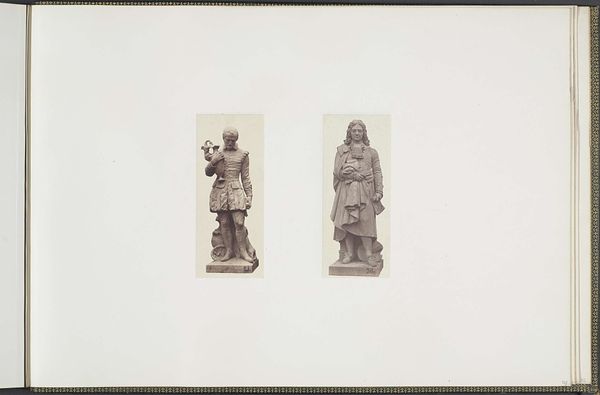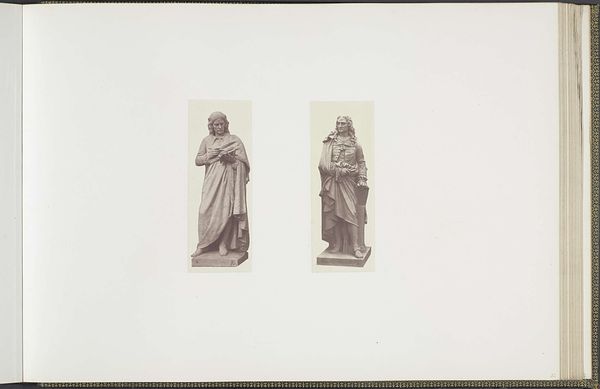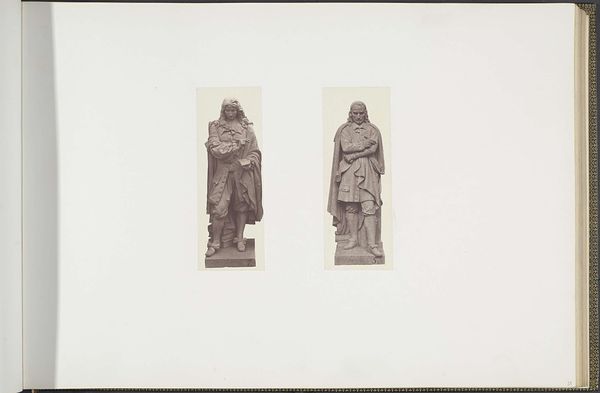
Gipsmodellen voor beeldhouwwerken op het Palais du Louvre: links "De Brosse" door Auguste Ottin en rechts "Cassini" door Hippolyte Maindron c. 1855 - 1857
0:00
0:00
edouardbaldus
Rijksmuseum
photography, sculpture, gelatin-silver-print
#
portrait
#
photography
#
sculpture
#
gelatin-silver-print
#
history-painting
#
academic-art
Dimensions: height 382 mm, width 560 mm
Copyright: Rijks Museum: Open Domain
Curator: Looking at this page from Edouard Baldus's album, dating from around 1855 to 1857 and now held here at the Rijksmuseum, we see gelatin-silver prints depicting plaster models for sculptures intended for the Palais du Louvre. Editor: They remind me of chess pieces. Isolated, each a player caught mid-strategy. It feels strangely formal and almost sterile. Curator: Well, that sense of formality stems from the conventions of academic art prevalent in that era. The sculptures themselves, \"De Brosse\" by Auguste Ottin on the left, and \"Cassini\" by Hippolyte Maindron on the right, were designed to represent important historical figures worthy of memorialization at the Louvre. Editor: Do you think they ever wondered, these stern stone men, that someday their likeness would be caught, tiny and gray, stuck in a book and peered at from a future they could not envision? It feels voyeuristic almost. Curator: The album itself serves a critical function in documenting the public art program underway at the Louvre during Napoleon III's reign. Photography, in this context, was used to catalog and disseminate information about these important artistic commissions. Baldus’ work became crucial for promoting national pride. Editor: Still, you see only the grand historical narrative and miss the intimacy of seeing artwork about to come into its final, physical form. It's not the pristine statue in all its glory, but the anticipation just before then. It’s interesting that someone even thought of immortalizing *that.* Curator: Indeed, considering it was the transition period from older photographic processes. Baldus was innovative to use the technology to elevate even the preliminary models to some form of public art of their own, foreshadowing how photography will shift and challenge painting as a dominant genre. Editor: I love how this piece is less about what was depicted and more about everything that brought it here— the light hitting each stone at a specific angle to freeze it as a document of something to come, not something that exists. Thank you for making it feel…alive. Curator: It's precisely that interplay between art, history, and the photographic medium itself that makes it worthy of exploration. Thank you, this conversation was a very fruitful one.
Comments
No comments
Be the first to comment and join the conversation on the ultimate creative platform.
